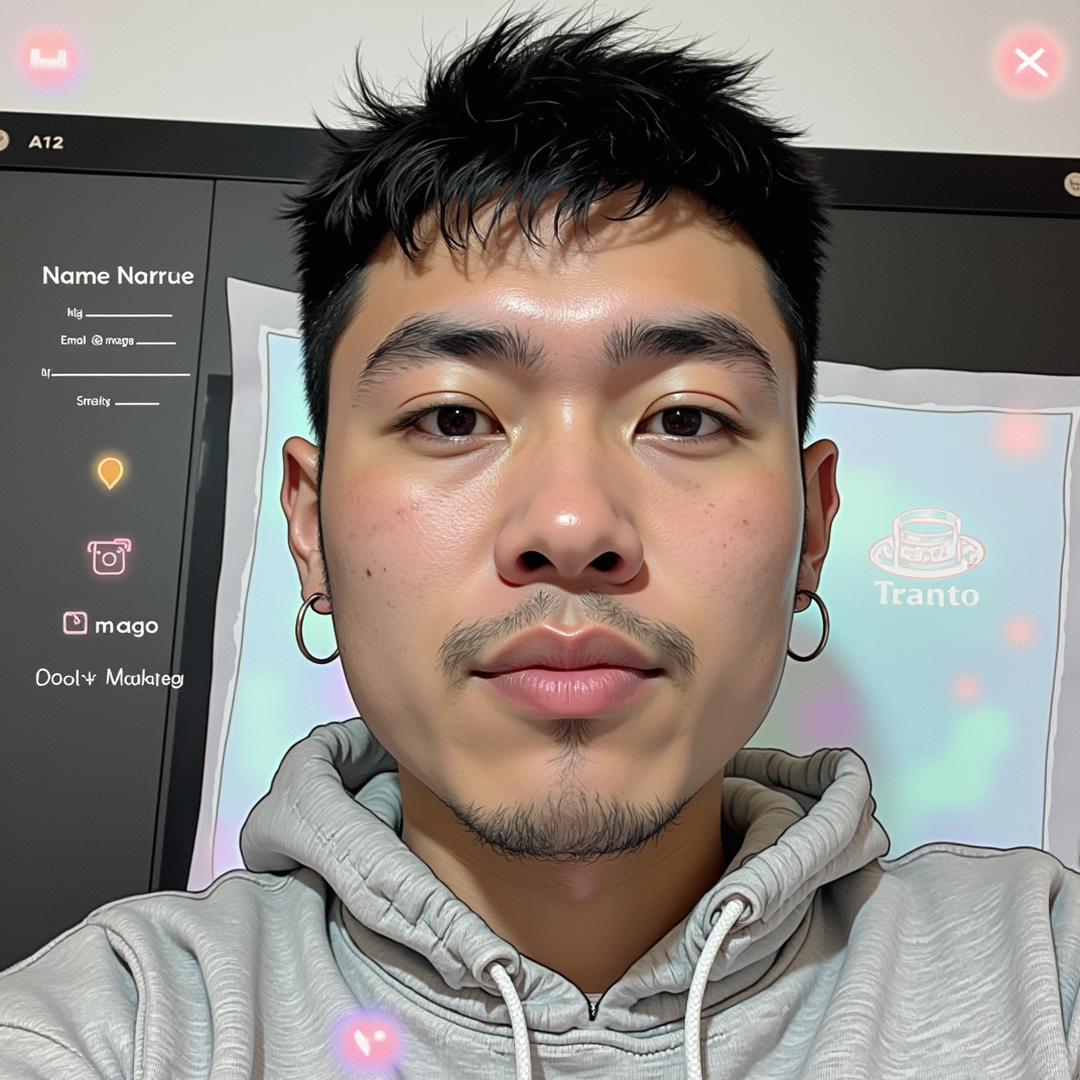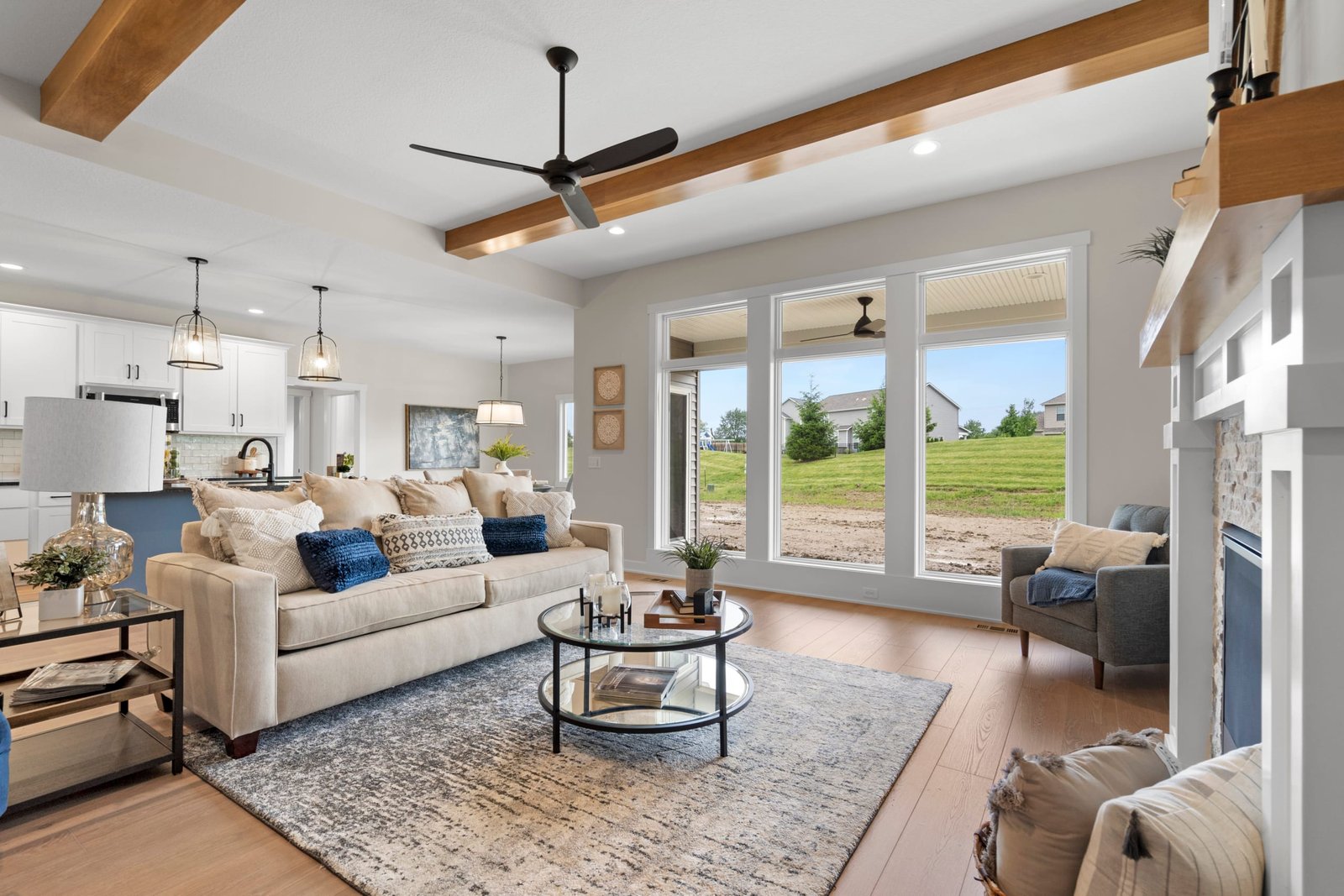
How to Capture Luxury Homes with Real Estate Photography
Real Estate Photography is more than just taking pictures of houses; it’s about crafting a narrative, showcasing a lifestyle, and evoking a feeling of aspiration. This is especially true when it comes to capturing luxury homes, where the stakes are higher, the details are more intricate, and the discerning eye of the potential buyer demands nothing less than perfection. Elevating your approach beyond basic techniques is crucial for succeeding in this niche. We’ll delve into the art and science of photographing high-end properties, offering practical strategies alongside creative insights that will help you capture the essence of luxury.
Mastering the Art of Composition for Luxury Spaces
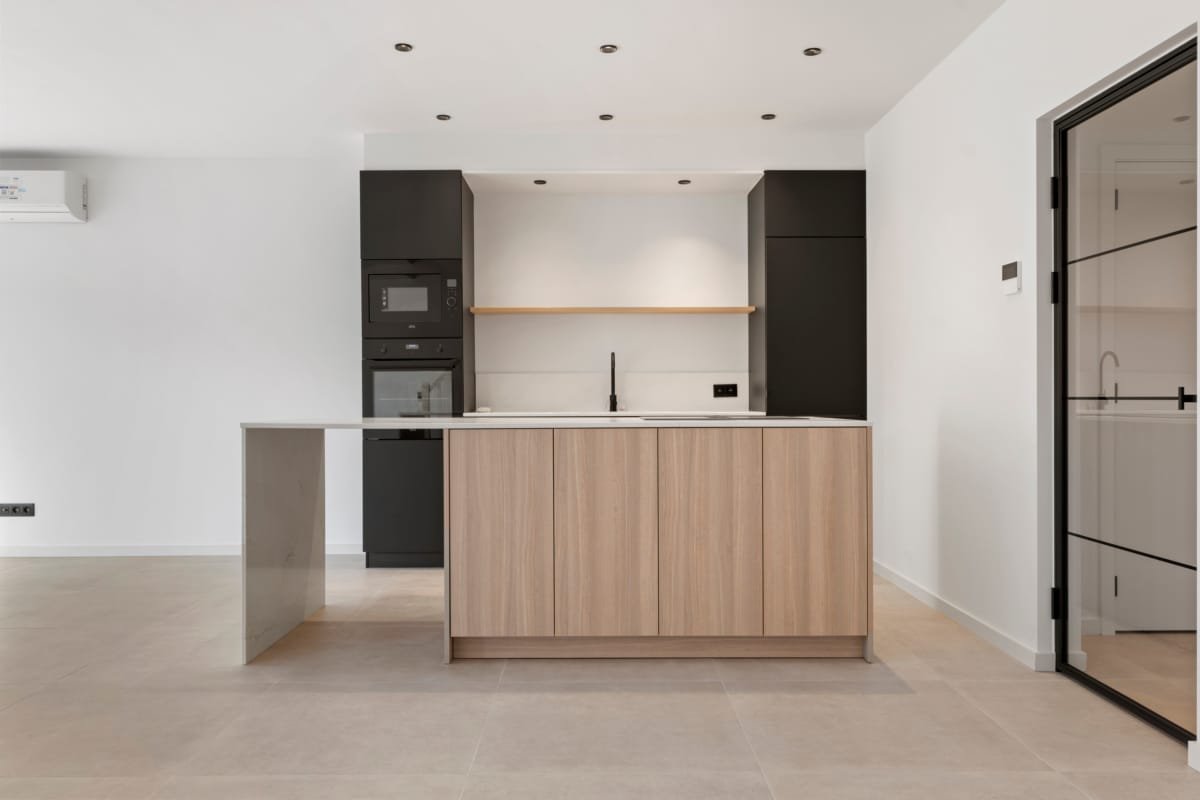
Luxury Homes with Real Estate Photography
Composition, often overlooked, is the backbone of exceptional Real Estate Photography. It’s not merely about framing; it’s about thoughtfully arranging elements within the shot to guide the viewer’s eye and tell a compelling story. In luxury homes, this is particularly crucial because every element, from the architectural lines to the high-end finishes, has been meticulously chosen. We need to emphasize these elements in a way that highlights their value. The goal is to create images that feel balanced, harmonious, and inviting. It’s about crafting an experience for the viewer that mirrors the experience of being present in the space itself.
The Power of Leading Lines and Symmetry
Leading lines are powerful tools that can draw a viewer deeper into an image and create a dynamic sense of movement. In luxury homes, these often come in the form of hallways, staircases, and elegant architectural details. By positioning yourself and your camera to take full advantage of these lines, you can create a sense of depth and grandeur. Symmetry, on the other hand, can evoke feelings of order and balance, which are often associated with luxury and sophistication. When a space allows, utilizing a symmetrical composition can enhance its appeal and showcase its thoughtful design. Consider reflecting hallways or capturing the balanced layout of a room to emphasize the meticulous planning behind a luxury property.
Beyond the physical aspects of composition, you must also consider the emotional effect you want to create. How do you want the viewer to feel when they look at the photograph? Do you want them to feel impressed? Relaxed? Inspired? Your composition should be a deliberate choice that aligns with the overall mood you’re trying to convey about the property. It’s not just about lining things up; it’s about creating an experience that resonates with the viewer on an emotional level. As you refine your approach, you’ll start to see the spaces you’re shooting as more than just rooms. They become environments, each with their own personality that you can help your images communicate.
Moreover, the use of negative space (the empty space around and between the subject) plays a pivotal role in the photograph as well. It allows the main features of a luxury home to breath, creating moments for the viewer’s eyes to rest, emphasizing the quality of materials and the spacious feel. In this manner, the image doesn’t feel too cluttered or overwhelming. Don’t be afraid to keep it simple. Allow architectural features such as a grand window or a designer light to be the focal point and let negative space work with your composition as it provides that sense of expansiveness and tranquility. The thoughtful use of composition can transform an ordinary snapshot into a work of art. It’s about creating a visual flow that highlights the essence of luxury living within the photograph you’re crafting, telling a compelling visual story that words alone cannot complete.
Framing the Shot: Utilizing Natural Elements and Built-in Features
Framing is another fantastic technique, and when capturing a luxury home, it should be used with intention and creativity. Think about utilizing doorways, arches, windows, and even natural elements like trees or bushes to create frames within the frames. This can add depth and visual interest, drawing the viewer’s eye to specific features within the space and create a sense of unveiling. Imagine shooting a stunning living room through an arched doorway, making sure that attention is given to the architectural design while the viewer is guided across the image. Each element will add layers of beauty to your photos.
Moreover, the use of built-in features such as in shelves or fireplaces can add beautiful visual frames. These natural frames can add depth and showcase the thoughtful design of the space by bringing the viewer into the image. When you are doing your location walk through, look around and see how the natural environment and the architecture of the space can help you create natural frames. Consider the unique attributes of every luxury setting that you come across. The creative use of framing is a subtle, yet effective, technique that can completely elevate your Real Estate Photography and make each image feel deliberate and captivating, leading the viewer through a series of discovery.
Finally, framing is also about controlling the viewer’s perspective. By carefully choosing what you include, and more importantly what you chose to exclude, you are able to guide the viewer’s emotions. This could mean using a low angle to exaggerate the height of a room or shooting through a window to place the focus toward the beautiful outside view. Framing is a method of manipulating the visual storyline. It helps you create photographs that not only capture the physical space, but also the atmosphere and mood of that luxury home. It’s not just about what’s included in the frame, but also about how you want your audience to see it, feel it. It’s about utilizing your skills to curate a visual experience that will be etched in the viewers’ mind.
Rule of Thirds and Golden Ratio: Bringing Balance and Harmony
The rule of thirds is a foundational principle in photography, whereby you divide the image into nine equal parts by two horizontal and two vertical lines and position key elements along these lines, or at their intersections. This technique creates a more dynamic and visually pleasing outcome than simply placing the main subject in the middle, which could also lead to a dull, repetitive feeling in your photographs. By using this rule, you force yourself as the photographer, to compose shots that feel more organic and less static. In the context of Real Estate Photography for luxury homes, this can mean placing architectural details, such as a grand staircase or a luxurious chandelier, along these lines to maximize their visual impact and create a sense of visual balance.
While the rule of thirds is a fantastic starting point, the Golden Ratio, also known as the Golden Mean or Section, can take your compositions a step further. The Golden Ratio is a mathematical proportion found in nature and art, which is thought to produce an aesthetically pleasing and balanced image. It’s a more nuanced and complex approach compared to the rule of thirds, which generally involves the division of an image into unequal proportions. When applied to Real Estate Photography, the Golden Ratio can lead to compositions that feel harmonious and naturally captivating, especially when showcasing the meticulously planned layouts of luxury properties. For example, you might compose your shots so that the main focal points of a room fall within the spirals or intersections of the Golden Ratio, creating a sophisticated visual flow that draws the viewer’s attention through the space.
However, it’s important not to approach these rules as inflexible laws. The aim is to understand these principles as guidelines that can inform the process of enhancing your images. Once you have a solid understanding of them, you can begin to experiment and occasionally break them to achieve specific artistic outcomes. In the end, the key is to balance these compositional techniques with what best showcases the property in the most impactful way that aligns with luxury perception. By creatively weaving and using them, you can bring a sense of visual harmony, that in turn enhances the overall presentation of your photographs.
Lighting: Illuminating Luxury and Ambiance
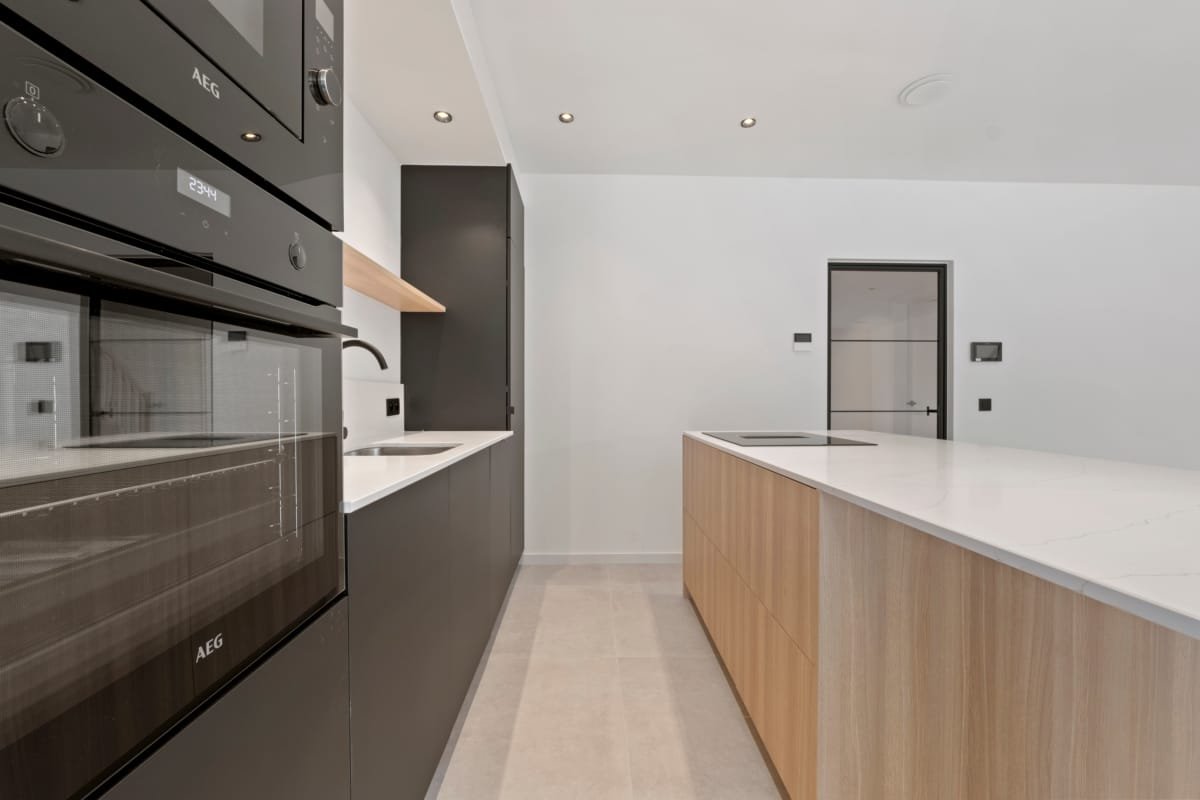
Luxury Homes with Real Estate Photography
Lighting is, without a doubt, one of the most important aspects of Real Estate Photography, and when you’re dealing with luxury homes, its importance is elevated even further. The right lighting can transform an ordinary room into a breathtaking space; conversely, poor lighting can make even the most opulent setting feel dull and uninviting. It’s the interplay between light and shadow that that reveals the textures, highlights the details, and creates the overall mood of your photos. For luxury properties, where ambiance is crucial, effective lighting techniques are not just important but essential. It’s about creating an environment that feels both inviting and aspirational, showcasing the house in the best possible light, not just physically, but also emotionally.
The Nuances of Natural Light and Its Advantages
Natural light is often considered a photographer’s best friend, and for good reason. It has a unique quality that cannot be completely replicated with artificial lighting. The soft, diffused glow of natural light can enhance the colors and textures of a space. When you are dealing with luxury homes, natural light helps accentuate the high-end finishes and the intricate details that make these properties exceptional. However, the use of natural light also depends on timing, weather conditions, and the orientation of the property. When it’s available, make sure to plan your shoots for optimal conditions in order to make the most of it. Assess each room in advance, determine the best time of day to capture it, and schedule your shoot accordingly. Also, when utilizing natural light, play with the shadows and highlights. Look for areas where the light falls in interesting ways, emphasizing architectural features or creating a sense of warmth.
The great part about natural light, is that it can be used to create a sense of openness and airiness, which is particularly beneficial in capturing the luxury experience. Large windows and sliding glass doors in luxury homes are often designed to maximize natural light. Take advantage of these features by carefully positioning the camera so that you capture the light beautifully enhancing the spatial depth within the photograph. In areas when natural light is abundant, you can also choose to under expose slightly, so that the external view is not washed out. It’s also important to understand how the light falls and changes throughout the day, to plan your shoot accordingly. Remember, natural light offers a unique quality and charm that makes each shoot dynamic.
But natural light is not without its challenges. You won’t always have an abundance of desirable natural light, so it’s important to be flexible and prepared to use artificial lighting where needed. However, when done thoughtfully and with a strategy, natural light will give a sense of authenticity and help present the luxury experience in a way that is both realistic and beautiful. In the end, this contributes to images that evoke the true appeal of your luxury homes. The key to using natural light is in observing how the light interacts with the space, making decisions to take advantage of it that will yield the best results for your particular style of photography.
Artificial Lighting: Complements, Not Conflicts
Artificial lighting is a crucial tool for Real Estate Photography, particularly when natural light isn’t sufficient. It can be used in such a way, to create the ambiance within the space when natural light is lacking, especially inside high-end properties. But it’s important to remember, the goal is for it to complement the existing light, not to compete with it, which means not creating a flat and unnatural lighting effect. When used correctly, artificial light can highlight specific architectural features, making shadows come alive and ultimately enhancing the overall aesthetic of your shots. It’s all an art, really, of balancing between natural and artificial light sources, creating a balance between the two that are neither overly artificial or too dark, it has to be just rigth.
When using artificial lighting, you can also consider the color temperature, or warmness and coolness, of your light sources. Many lighting systems have options that can be changed to warm, cool, or neutral, which will affect the tone of your photographs. For example, to enhance a warm, cozy atmosphere, consider using lighting with a warmer color temperature; if your goal is a crisp, clean feel, use cooler lights are a better option. This careful consideration can dramatically impact how your viewer emotionally connects with the photographs. You have to become an expert in managing color balance.
Many photographers use a variety of different lights – such as flashes, strobes, continuous lights and reflector – in Real Estate Photography. Each of these different light sources have pros and cons that they bring to the table. Some are more portable, some are more powerful, and some create very soft and even lighting. Become familiar with them to best determine the ones that work perfect with your personal photography style. Consider the size and scale of the rooms that you are photographing to determine the optimal lights for creating even illumination. But lighting is not just about using the right equipment, it also requires a trained eye and a deep understanding of how light impacts textures, colors and the overall feel of the shot.
The Art of Light Blending and HDR Techniques
The biggest challenge in Real Estate Photography is dealing with the dynamic range between bright outside views and darker interior spaces. In many situations, a single exposure cannot capture all these varied areas of light within a luxury home property. This is where HDR (High Dynamic Range) techniques and light blending come into play. HDR involves taking multiple images at different exposure levels, combining them to create a final image that has an expansive tonal range, in order to bring the details both in the shadows and highlights. On the other hand, light blending is a more manual process, that involves blending the best aspects of several exposures, choosing the ones that are most visually appealing.
When photographing a room with a bright outdoor view, for instance, you can take one image exposed for the interior to show all of it’s details, and another, for the window to capture the bright details outside, without blowing it out. You can then use photo-editing tools to blend the pictures to reveal a final photograph that showcases the depth and details that would otherwise be lost if captured in a single exposure of the scene. However, the key thing here is to use these techniques subtlety, never compromising the authenticity of the place while you’re using these processes. The main goal is always to create a photograph that is visually balanced without looking artificial or heavily processed.
When HDR is used excessively, could result in an unnatural and unrealistic appearance to the images, which can detract from the feeling of high-end luxury. The focus has to be the most accurate representation of the space; therefore, the HDR and light blending process are just there to enhance the beauty and showcase the true nature of the property being photographed. These technologies are tools, and just like any other tools, have to be used with a high level of knowledge, skill and attention to detail. In this space you will learn to seamlessly blend the use of it, with the natural appearance of the photograph. In other words, the best use of HDR and light blending will produce photographs that are as true to life and naturally beautiful as possible.
Capturing Detail: Showcasing the Luxurious Finishes
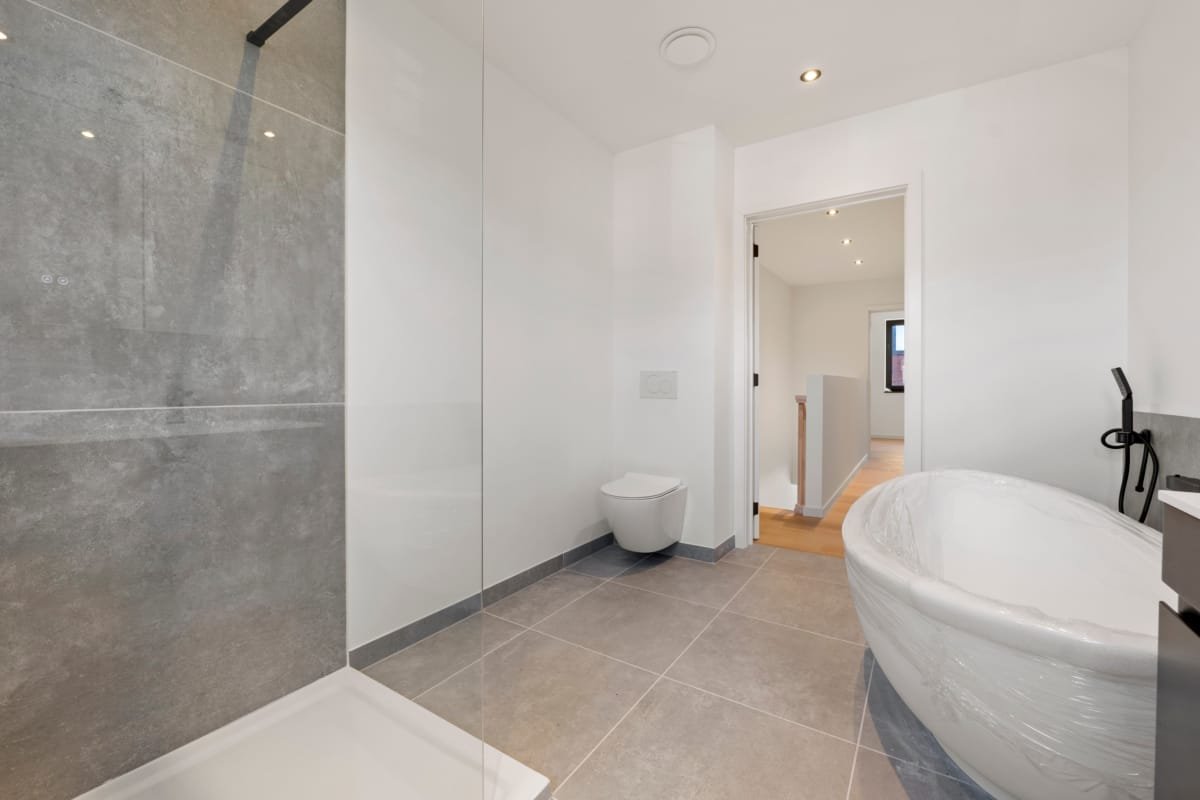
Luxury Homes with Real Estate Photography
Luxury homes are characterized by the meticulous attention to detail, superior craftsmanship, and use of fine materials. Capturing these elements effectively in your Real Estate Photography is essential to communicate the true value and character of these properties. Going beyond just the overall shots, a deep focus on the close details is necessary for high-end homes. These details can range from delicate molding, fine fabrics, to unique artistic creations and are instrumental in showing the true quality of the property. A shallow depth of field can be used to bring focus to these delicate details in order to show their quality and attention to design. This also engages the viewer and invites a closer look which ultimately will create a visual story that captures the heart of luxury.
Highlighting Textures and Materials for a Tactile Experience
When dealing with luxury homes, the textures and materials used are premium quality and often create a tactile experience to the overall space. When photographing, focus on showcasing these as they make up the essential character of the property. When you photograph high-end textiles, like silk carpets or velvet cushions, you should consider how the light falls on them, that way you capture soft textures, colors and patterns. By positioning your camera close to these materials, you can bring the sense of touch to the photograph, making the viewer feel they can actual sense the quality and character of the space. In surfaces that are glossy, such as varnished wood, granite or marble counter tops, take shots to see how the light reflects differently on each one, this way you can bring out the depth of colors, the patterns and the unique qualities.
When dealing with more textured materials, such as stone walls or rough cut wood, use angles and light to highlight the irregularities and depth. This gives more realism to the texture of different surfaces, adding character to your photos. Consider every surface of everything in your shots, because every detail contributes to the overall feeling of luxury. Every shot should tell a story about the quality of materials and the intentional choices the creators have put in the design. Also take some time to make sure the space is styled, so that every material is showcased in the best possible way. When doing this, you will be showcasing a story of craftsmanship, luxury, and the experience of the space.
Be mindful of the colors within the luxury homes you’re photographing. Colors are an essential element to creating and showcasing the mood and the quality of materials. Capture the vibrancy of the colors that work with the textures of each surface you are photographing. When capturing subtle variations of color, use soft lights and angles, which can help to bring out the true color of the fabrics and materials. The main concept with this type of photography is to highlight a story about the high-quality finishes and materials, highlighting the elements that create a distinctive appeal in luxury properties. Each of your shots should invite viewers to really feel and appreciate the tangible details that make these homes exceptional.
Close-Up Shots: Showcasing the Value in the Details
While overall images of a luxury home can display the beauty of the space, close-up shots of specific features are equally important to communicate the sense of quality and attention to detail that are very important when photographing a high-end home. Close up shots should always feature the most distinctive elements in your luxury properties, whether you’re capturing a hand-carved door knob, artisan light fixtures, or custom built-in pieces of furniture. It’s about selecting the details that will truly define the overall sophistication of the property. Each of these close-up shots will contribute to the creation of a cohesive visual story that enhances the appreciation of the discerning client.
Keep your angle of approach in mind when capturing these images, taking them from a variety of perspectives so you can see how the light interacts with different details. Doing this will make sure you capture the most interesting aspects of each detail. Make sure that your details shots are carefully composed. Use the principles of composition and the rule of thirds to draw the attention of the viewer to individual details. Creating an organized and carefully curated approach to every photo. A carefully planed approach to these close-ups will not only highlight the quality, but also invite the viewers to appreciate every single aspect of a luxury property. The intent should be to make a compelling visual story.
In addition, depth of the field also plays a critical role in these close-up shots. Using a shallow depth of field will bring focus to the primary subject within your photographs, while blurring the background. This technique will help bring your viewers to the beautiful details that are truly worth highlighting. The main purpose is to bring attention to the artistry and sophistication of unique aspects, in the context of every luxury home while maintaining a level of clarity and intent, so that every closeup helps to create a much bigger picture of all the luxurious elements within this type of real estate. So, do not overlook the small things because they are essential to building the overall photograph narrative.
Telling a Story Beyond the Walls: Lifestyle Shots and Unique Elements
While photographs of the interior elements are essential, it is often forgotten the power that lifestyle shots possess, that can truly bring depth to your Real Estate Photography. These photographs go beyond the architecture and finishes of the property and showcases the experiences and possibilities living in this kind of home. This kind of imagery communicates the essence of the kind of lifestyle buyers can enjoy. Make sure to capture things like outdoor spaces, beautiful dining areas and relaxation areas. This type of photography should showcase the home as a place where people can connect with the environment while enjoying the high-end features offered in these kinds of real estates.
These lifestyle shots play an important role in capturing the emotional appeal of a home and connecting to a deeper level with potential buyers. Capture the details that emphasize this feeling of luxury and connection. Look for images that create a sense of relaxation, entertainment and personal enrichment. Always be mindful of the elements that portray not just the space, but the overall experience. This will truly be unique with every single luxury property. And this is also the perfect time to use any unique features in a property, such us a wine cellar, a private theatre, a yoga or meditation space, or a perfectly curated library. By carefully showcasing these special features you are showing the uniqueness that are present in luxury properties.
The key is to bring to life what it would be like to live in such a beautiful property, creating an almost tangible desire of potential buyers to envision themselves living in that space. These photos help them create a story in their imagination, and through the lens of your camera, they have the capability to see the possibilities. So always keep in mind that luxury homes are much more than just structures, and that capturing unique details, lifestyle shots, is truly what helps you tell the story of the property, while highlighting a beautiful experience, thus taking your photography to the next level. When potential buyers sees that vision, they quickly connect through the use of images, and those images work towards the creation of a compelling visual narrative.
Staging and Styling: Enhancing the Visual Narrative
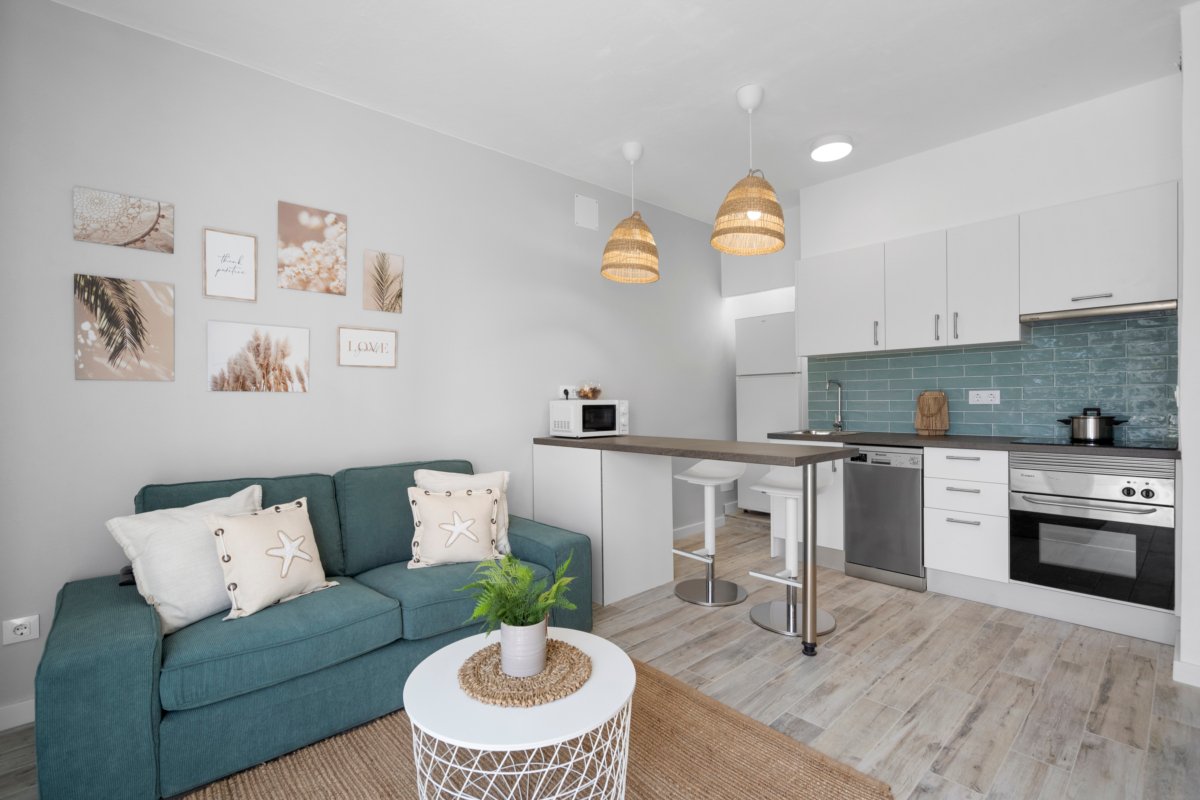
Luxury Homes with Real Estate Photography
Just as the lighting is key in Real Estate Photography, staging and styling are not only equally crucial, but also vital towards elevating your approach to luxury homes. It’s about creating a space that appeals to the aspirations of your target customer and making them imagine the experience of living in such a beautiful space. The staging should enhance not compete with the architectural design, it should always be a subtle process. The goal here is to transform normal rooms into beautiful experiences, where potential buyers can truly picture themselves living the kind of life they aspire to.
Decluttering and Neutralizing: Creating a Serene Canvas
Decluttering and neutralizing a space are essential first steps that create the foundations for excellent Real Estate Photography. When it comes to luxury homes, these steps are not just about making the space neat, but also to create an atmosphere of sophistication and elegance, which allows the key architectural elements to really shine. When you start by decluttering surfaces, and removing personal items, it helps you create a clean and spacious feel, while avoiding distractions that would take away from key elements. The objective here is to create a visual calm, letting your viewers focus on the features and design of the property.
When neutralizing is done, aim to create a cohesive and balanced setting as you are dealing with high-end properties. Select furniture and accessories that are classic and timeless, avoiding items that are too trendy or too personal. The goal is to appeal to a much bigger group of buyers who have particular taste, however, the staging should highlight the unique quality of the home. Neutral colors, such as creams, grays and whites offer a base for these luxury elements to truly shine since they do not clash and distract your eyes. This overall approach will create the perfect space that will allow your real photographs to showcase the true nature of luxury.
So, when you’re staging, always take a thoughtful approach, keeping in mind the importance of space and visual harmony. Decluttering and neutralizing is not just about clearing the room, it’s about creating an environment wherein even the most discerning buyers to envision themselves in the perfectly staged luxury home. Remember that the goal here is to showcase the property’s assets and features so that it truly creates a compelling visual narrative.
Strategic Furniture Placement: Maximizing Space and Flow
The placement of furniture plays a key role in Real Estate Photography as it can dramatically influence the perception of the space. The right strategic placement can not only guide the eye but also create an inviting visual flow that enhances the sense of luxury and spaciousness, making it a real crucial part of your styling process of real estate. Make sure to avoid putting furniture against walls. Instead, create arrangements that promote conversation and flow, this allows the space to feel more open and inviting. When using large pieces, strategically place them to make focal points around the room rather than blocking key architectural features or views.
Pay attention to the scale of furniture as you also consider the size of the room, using pieces that are proportional to each other, which will avoid cluttering and overwhelming the space. When you’re staging a living room, arrange the seating to create a sense of openness while promoting interaction between family and friends. If it’s a dining room you are photographing, make it feel as if there’s going to be a luxury dinner taking place. The key here is to create a feeling of balance, inviting viewers to picture their life in a space while connecting with it at an emotional level. The right furniture placement should emphasize the positive features of the space.
Also keep in mind to keep walkways clear so that potential buyers can easily walk through the space. This includes using lighter pieces of furniture so that the entire space feels airy. Remember that the goal is to show the space at its full potential. Make sure to focus on enhancing the design, the functionality and aesthetics of the property and let your photography tell the story of beautiful and harmonious living, while showcasing the unique aspects and opportunities for potential buyers of a beautiful and well-staged luxury property.
Accessorizing with Purpose: Adding Personality and Warmth
Accessorizing is a form of art when it comes to Real Estate Photography, that involves choosing key pieces that add warmth, personality and life to the overall photograph. This does not mean just adding any items, but thoughtfully selecting elements that complement the design and architecture, that make the space feel more inviting. Things like high end decorative bowls, carefully chosen flower arrangements, or abstract art pieces will add a sense of sophistication to the space. These details will truly help enhance the sense of luxury that is expected in a high value home.
When choosing your accessories pay attention to the color pallet and textures. Make sure to select items that complement existing colors, adding visual interest and depth, and always maintain a cohesive look and feel to the entire home. Consider textures that will enhance the feeling of luxury. When choosing art, select pieces that enhance the elegance of the overall space and always keep the scale in mind, so that each piece is proportional to each room. Remember, the goal here is to complement the architectural design rather than over powering it.
The way you strategically place each accessory will help you highlight its beauty. For instance, a well placed vase with flowers on a mantle will highlight the architectural design. Or a beautifully styled coffee table will attract the viewer to feel comfortable in the space. The main goal here is always to enhance the overall experience adding depth to the images of the real estate property. Remember that it’s is about presenting a sense of aspirational living, where every detail adds to the narrative being created to generate a stronger emotional connection between potential buyers and the home. Ultimately, well designed accessorizing will transform a beautiful house into a place people can relate to.
Post-Processing: Refining Images for High-End Appeal
Post-processing is a vital part of the photography process in the Real Estate Photography industry. And when we’re capturing luxury homes is where images will come to life, with the use of these techniques, because post-processing is more than just making minor adjustments. It’s an opportunity to elevate your images, bringing them to life with great clarity, while creating consistency and refinement in each photo, ultimately capturing the essential appeal expected in high-end properties. This detailed process can ensure that all images are of the highest quality which is extremely important for today’s market.
Color Correction and White Balance: Ensuring Accuracy
Color correction and white balance is important for quality, however, these details are often overlooked in the post-processing process. When you balance the color corrections in your photographs, they make sure an image reflects the true tones within each space. The correct white balance will ensure that the colors in your interiors and exteriors look natural and realistic. When lighting is off, it can distort the colors of the walls, furniture pieces, countertops and other areas within a photograph, making it seem unrealistic and dull. And luxury properties rely on the feeling of perfection to make an impact on potential buyers.
Therefore, by carefully adjusting the white balance in each image, you can have the proper color temperature, so all of your photographs look exactly like they should. When you’re dealing with different kinds of light sources, such as tungsten, LED, or natural light, color correction is absolutely essential for ensuring that the colors are consistent throughout your whole series of photos. By using the right color tools, you can subtly adjust the colors, enhancing the details and overall presentation of the space. This approach transforms images into a clear and professional presentation which is absolutely essential in the luxury real estate world.
In a world where everything looks bright and colorful, your images need to have the same quality. Your goal is to create a visual impact with precision in color representation, therefore never forget the power of accuracy and consistency. Post-processing is all about having a keen eye for detail and the goal is to not only capture a beautiful home, but make sure it also represents the true essence of a luxury space that will set your photos apart, and make your services a premium brand.
Sharpening and Noise Reduction: Enhancing Clarity and Details
Sharpening and noise reduction are essential steps for post-processing when you’re aiming to elevate your images to a higher level. These techniques are aimed at improving clarity, revealing details and making those photos stand out above the rest. Sharpening will enhance the detail and create crisp edges, leading to a more pleasing and sharp image, while also helping the intricate parts of each architectural piece come to life. This is extremely important when you’re capturing luxury homes, where small intricate detail matters.
Noise, on the other hand, refers to unwanted specks that make pictures seem grainy. When you reduce the noise, particularly in dark areas of your images, you can improve the overall image quality and make your photos cleaner and polished. These techniques will ensure every small detail is properly captured with clarity. Using these tools efficiently will greatly enhance your photographs and make them look more professional, which is absolutely essential when showcasing high-end real estate.
The use of sharpening and noise reduction in moderation is key. When overdone, you could easily oversaturate your images in a way that they appear over-processed and artificial, and therefore this step requires balance and caution. As a photographer, you must learn to strike that balance, always aiming to enhance without making it look unrealistic. When all of your images are sharpened and they look clear, they have the most impact, in a way that will ultimately attract potential buyers and elevate the appearance of luxury homes.
Removing Distractions and Correcting Perspectives for Cleaner Compositions
When you’re working on real estate interiors, removing distractions and ensuring proper perspective is an essential step in post-processing, specially when presenting luxury homes where even the smallest detail can have a big impact. Removing distracting elements such as small objects and other temporary elements are part of the post-processing tools to ensure that nothing takes away from the design, the architecture, and overall appeal of the property. Always take out the items that do not add any to the space and those items shouldn’t capture the attention of potential buyers.
Also, correcting perspectives during the post-processing stage is important towards having an accurate photograph since most photographs are taken with a wide angle camera. This will help straighten the lines, while eliminating any possible distortions that might make an image appear warped or angled. By carefully adjusting the perspective, your images will look visually balanced. The vertical lines will appear straight and the entire photograph will feel harmonious, which is what is expected in the luxury industry.
Both, removing any distractions and correcting perspective distortions, is essential towards creating a visually appealing image and showing properties in the highest level in the luxury real estate photography niche. This also enhances the professional feel, while showcasing the true value and making your photos stand above the rest. This helps you tell your story with clarity and authenticity.
Conclusion
Capturing luxury homes with Real Estate Photography requires much more than just pointing and shooting; it’s a fusion of technical skill, artistic vision, and a firm understanding of what defines luxury. By consistently refining your skills in composition, lighting, detail capture, and staging, you’ll elevate the standard of the work you produce and you’ll attract clients who appreciate and respect the craft. Remember that every image you create is a communication tool that connects potential buyers with the aspiration of high-end living. When you invest in the necessary tools and processes, you are also investing in the success of your own practice, thus creating not only striking images but also a strong visual brand in the competitive arena of luxury Real Estate Photography.
Contact me for the best real estate photo editing service.






